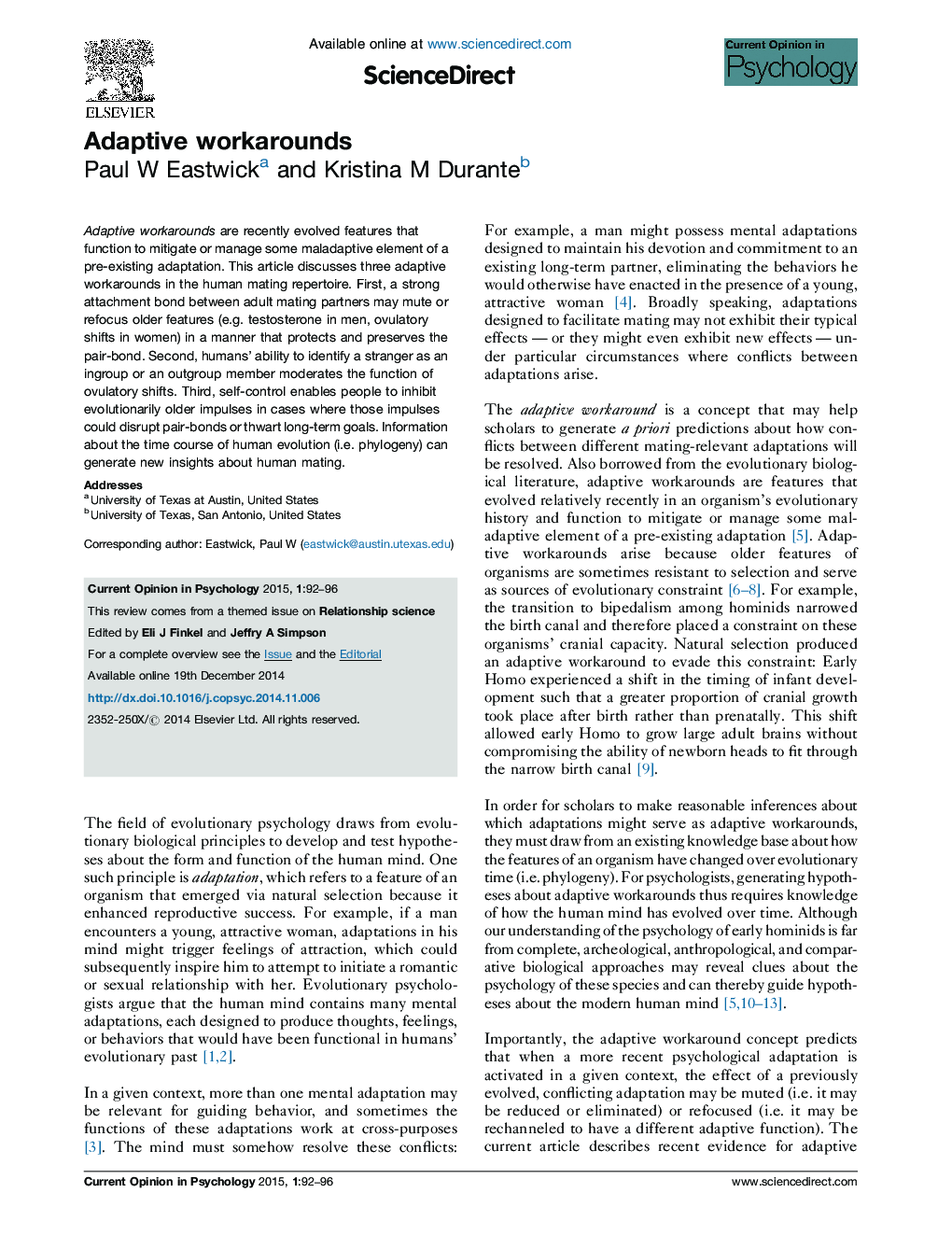| Article ID | Journal | Published Year | Pages | File Type |
|---|---|---|---|---|
| 879411 | Current Opinion in Psychology | 2015 | 5 Pages |
•Adaptive workarounds may emerge when newer and older mental adaptations conflict.•Strong attachment bonds moderate men's testosterone and women's ovulatory shifts.•Group membership moderates ovulatory shift effects in both sexes.•Self-control moderates the effect of older evolved impulses on mating behavior.
Adaptive workarounds are recently evolved features that function to mitigate or manage some maladaptive element of a pre-existing adaptation. This article discusses three adaptive workarounds in the human mating repertoire. First, a strong attachment bond between adult mating partners may mute or refocus older features (e.g. testosterone in men, ovulatory shifts in women) in a manner that protects and preserves the pair-bond. Second, humans’ ability to identify a stranger as an ingroup or an outgroup member moderates the function of ovulatory shifts. Third, self-control enables people to inhibit evolutionarily older impulses in cases where those impulses could disrupt pair-bonds or thwart long-term goals. Information about the time course of human evolution (i.e. phylogeny) can generate new insights about human mating.
